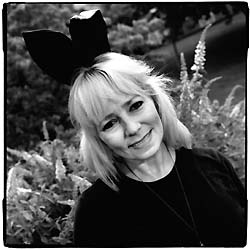Before honoring a Bird, it housed the Bunnies. Such is the saga of 28 S. Light St.
By Brennen Jensen (Baltimore City Paper, 8/19/1998)
Since 1993 the slender building at this address has been adorned with the looming likeness of Oriole Cal Ripken Jr. A sign company occupies the storefront beneath Cal’s feet. Before that local clothier Jos. A. Bank sold suits there. And before that–for a dozen mad, glad years–this unassuming building was the Baltimore Playboy Club, local outpost of centerfold king Hugh Hefner’s silly, salacious empire.
Adjust, if you will, your mind-set to a time before brassieres were torched and the word “sexual” was teamed with “harassment.” In a stretch of years bookended by Eisenhower’s second term and the Summer of Love, Playboy Inc. was a cultural force. The original Playboy Club opened in Chicago in 1960, just seven years after “Hef”–failed cartoonist and erstwhile circulation director for Children’s Activities magazine–launched Playboy magazine with borrowed cash and three nude photos of Marilyn Monroe. The members-only club (you paid $50 to become a “key holder”) offered cocktails, eats, and entertainment. But the real draw were the Bunnies–women in satin corsets with bunny ears on their heads and bunny tails on their heinies. Within a year the Chicago Playboy Club had locked in more than 106,000 members.
From this initial hutch other Playboy clubs bred like, well, rabbits–opening in New York, Miami, Los Angeles, and points in-between. Baltimore got its Bunnies in 1964 (though not without public protest from some irate local ladies). Bunnies reported to a Bunny Mother and boned up on Bunnyhood via a 44-page Manual. (“Your proudest possession is your bunny tail,” it informed. “You must make sure it is white and fluffy.”) The manual was penned by the director of Bunny training–Hef’s younger brother, Keith, whose previous claim to fame was starring in the Baltimore kiddie TV show Mr. Toby and His Tip Top Merry Go Round.
Continue reading “Bunny Trail” at Baltimore City Paper.

